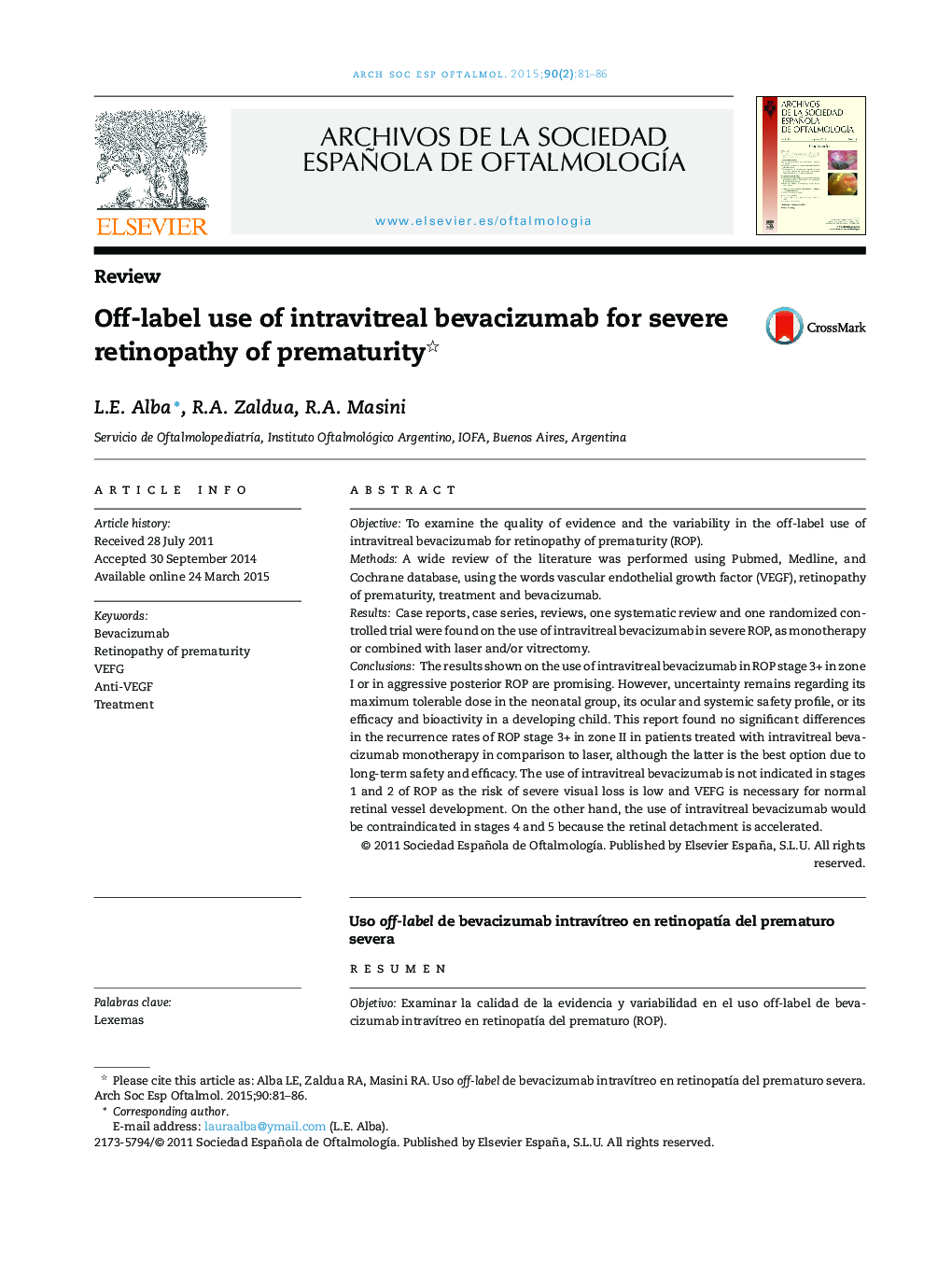| Article ID | Journal | Published Year | Pages | File Type |
|---|---|---|---|---|
| 4008166 | Archivos de la Sociedad Española de Oftalmología (English Edition) | 2015 | 6 Pages |
ObjectiveTo examine the quality of evidence and the variability in the off-label use of intravitreal bevacizumab for retinopathy of prematurity (ROP).MethodsA wide review of the literature was performed using Pubmed, Medline, and Cochrane database, using the words vascular endothelial growth factor (VEGF), retinopathy of prematurity, treatment and bevacizumab.ResultsCase reports, case series, reviews, one systematic review and one randomized controlled trial were found on the use of intravitreal bevacizumab in severe ROP, as monotherapy or combined with laser and/or vitrectomy.ConclusionsThe results shown on the use of intravitreal bevacizumab in ROP stage 3+ in zone I or in aggressive posterior ROP are promising. However, uncertainty remains regarding its maximum tolerable dose in the neonatal group, its ocular and systemic safety profile, or its efficacy and bioactivity in a developing child. This report found no significant differences in the recurrence rates of ROP stage 3+ in zone II in patients treated with intravitreal bevacizumab monotherapy in comparison to laser, although the latter is the best option due to long-term safety and efficacy. The use of intravitreal bevacizumab is not indicated in stages 1 and 2 of ROP as the risk of severe visual loss is low and VEFG is necessary for normal retinal vessel development. On the other hand, the use of intravitreal bevacizumab would be contraindicated in stages 4 and 5 because the retinal detachment is accelerated.
ResumenObjetivoExaminar la calidad de la evidencia y variabilidad en el uso off-label de bevacizumab intravítreo en retinopatía del prematuro (ROP).MétodosSe realizó una revisión amplia en Pubmed, Cochrane, Medline, utilizando las palabras factor de crecimiento vascular endotelial (VEGF), retinopatía del prematuro, tratamiento y bevacizumab.ResultadosSe encontraron publicados casos y series de casos, revisiones, una revisión sistemática y un ensayo clínico controlado y aleatorizado sobre uso de bevacizumab intravítreo en ROP severa, como monoterapia o combinado con láser o vitrectomía.ConclusionesAunque los resultados de la revisión han mostrado que la inyección intravítrea de bevacizumab es promisoria para el tratamiento de la ROP estadio 3+ en zona I o la ROP agresiva posterior, aún permanecen inciertas algunas cuestiones fundamentales como dosis máxima aceptada para prematuros, riesgo de efectos colaterales sistémicos y oculares a largo plazo, eficacia y bioactividad en un niño en desarrollo. En los reportes no hubo diferencias significativas en la tasa de recurrencia entre el tratamiento con bevacizumab intravítreo como monoterapia y tratamiento láser para el estadio 3 en zona II; este último es la mejor opción por seguridad y efectividad a largo plazo. En los estadios 1 y 2 de ROP no está indicado el tratamiento con bevacizumab intravítreo porque el riesgo de pérdida visual severa es bajo y el VEFG es necesario para el desarrollo de los vasos normales de la retina. Por otra parte, en estadios 4 y 5 debería ser contraindicado el uso de bevacizumab intravítreo porque acelera el desprendimiento de retina traccional.
